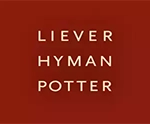By Maria Cheng
The Associated Press
LONDON – About half of American doctors in a new survey say they regularly give patients placebo treatments – usually drugs or vitamins that won’t really help their condition. And many of these doctors are not honest with their patients about what they are doing, the survey found. That contradicts advice from the American Medical Association, which recommends doctors use treatments with the full knowledge of their patients. “It’s a disturbing finding,” said Franklin G. Miller, director of the research ethics program at the National Institutes of Health and one of the study authors. “There is an element of deception here which is contrary to the principle of informed consent.” The study was being published online in today’s issue of BMJ, formerly the British Medical Journal.
Placebos as defined in the survey went beyond the typical sugar pill used in medical studies. A placebo was any treatment that wouldn’t necessarily help the patient. Scientists have long known of the “placebo effect,” in which patients given a fake or ineffective treatment often improve simply because they expected to get better. “Doctors may be under a lot of pressure to help their patients, but this is not an acceptable shortcut,” said Irving Kirsch, a professor of psychology at the University of Hull in Britain who has studied the use of placebos.
Researchers at the NIH sent surveys to a random sample of 1,200 internists and rheumatologists – doctors who treat arthritis and other joint problems. They received 679 responses. Of those doctors, 62 percent believed that using a placebo treatment was ethically acceptable. Half the doctors reported using placebos several times a month, nearly 70 percent of those described the treatment to their patients as “a potentially beneficial medicine not typically used for your condition.” Only 5 percent of doctors explicitly called it a placebo treatment. Most doctors used actual medicines as a placebo treatment: 41 percent used painkillers, 38 percent used vitamins, 13 percent used antibiotics, 13 percent used sedatives, 3 percent used saline injections, and 2 percent used sugar pills.

